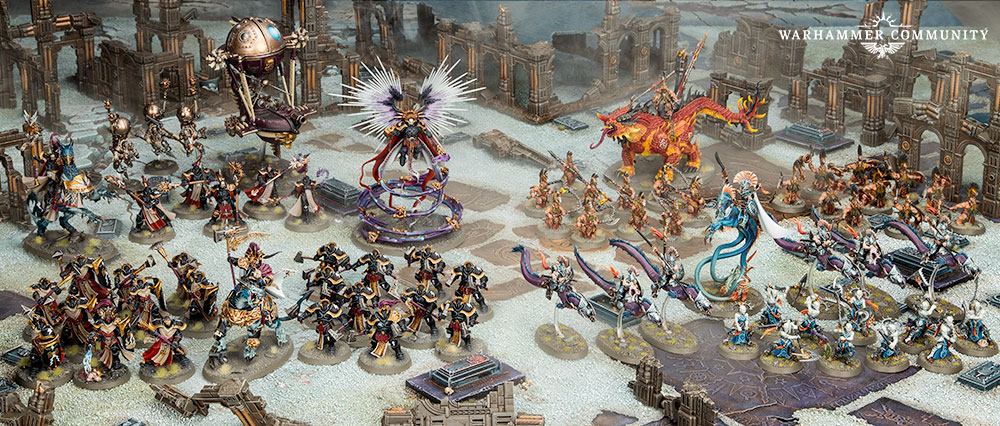40K vs AoS: Who Does It Better


Warhammer 40k and AoS share some similarities but they are different games. So which one does it better?
Today we’re going to list off some of the major differences between the two systems that make up Games Workshops core games and compare them. We want to know which options you like in your tabletop wargame. It’s Warhammer vs Warhammer – which Game System does it better?
Random Turn Order vs Fixed
In Age of Sigmar, the players roll off at the start of each turn to determine who will get to go first on that turn. In 40k, players roll that at the beginning of the game and it’s fixed for the rest of the game. There are pros and cons for each – like being on the receiving end of the dreaded “double turn” in AoS or being on the receiving end of the Alpha-strike in 40k. AoS games tend to be a bit more conservative when it comes to those “big” turns because of that threat whereas in 40k, players tend to be a bit more aggressive thanks to knowing the order.
Which do you prefer – Random or Fixed?
To-Wound Fixed Numbers Vs Strength/Toughness Chart
In AoS, models can wound other models based on a fixed number with the To-Wound rolls. In 40k, this is determined by a Strength vs Toughness chart. For AoS, that means that any unit can be a legitimate threat to any other unit if it can roll those target numbers. In 40k, that means the weakest units can still wound the toughest – but only on a 6. Fundamentally, that means AoS tends to be more lethal thanks to their fixed wound number where as in 40k, really tough units are nigh unkillable by weak attacks.
Which do you prefer – a fixed number or a sliding scale?
(Note: We’re not taking into account unit buffs at this point – just the core mechanic of fixed vs dynamic to-wound rolls)
Allies: Detachments vs Fixed Ally Points
In regards to Allies in Matched Play, aside from faction restrictions, AoS and 40k differ greatly. 40k has a Detachment system that allows you to mix-and-match detachments following keyword requirements. In AoS Allies can be included up to a specific number of points and on your Army Allegiance. The key difference between the two is that 40k has room for unlimited ally points (up to the max) vs AoS with a fixed ally budget.
Which do you prefer: Unlimited Ally Points or Fixed Ally Points?
Melee Activation & Positioning
In the Melee/Combat phase, there are some key differences between the two systems when dealing with unit activation and model positioning. In 40k Melee attacks have an effective range of 2″ (attackers must be within 1″ of an enemy or within 1″ of a model of their unit who is within 1″ of an enemy) vs AoS where you can have melee attacks that have a 3″ range. When you combine these factors with the Unit Coherency rules (40k = 2″, AoS =1″) and who can activate in each system (AoS = any unit that charged or is within 3″ of an enemy unit, 40k = charging units or units within 1″ of an enemy), positioning in AoS tends to become much more important than in 40k.
Which Melee system do you prefer: AoS vs 40k?
Lords of War
Finally, the last major difference we are going to touch on is the existence of Lords of War in 40k and the lack of such units in AoS. In 40k, Lords of War like the Castellan can be game-winners on their own and represent massive points investments in matched play. In AoS, there are a few units (like Nagash) that can be a big points investment but they are few and far between. All armies in the game have access to Lords of War – either in their own codex or they can ally them in from another source in 40k thus making them more widely available. In AoS, armies have access to behemoth-class units or powerful heroes but nothing comes close in power or the availability of Lords of War slots.
Which do you prefer: Gaming with or without Lords of War?
There’s no right or wrong answer here – these are all opinions and everyone has their own preference. Let us know which options you prefer in the comments!
PS – You can enjoy both systems. That’s, just like, your opinion, man.











